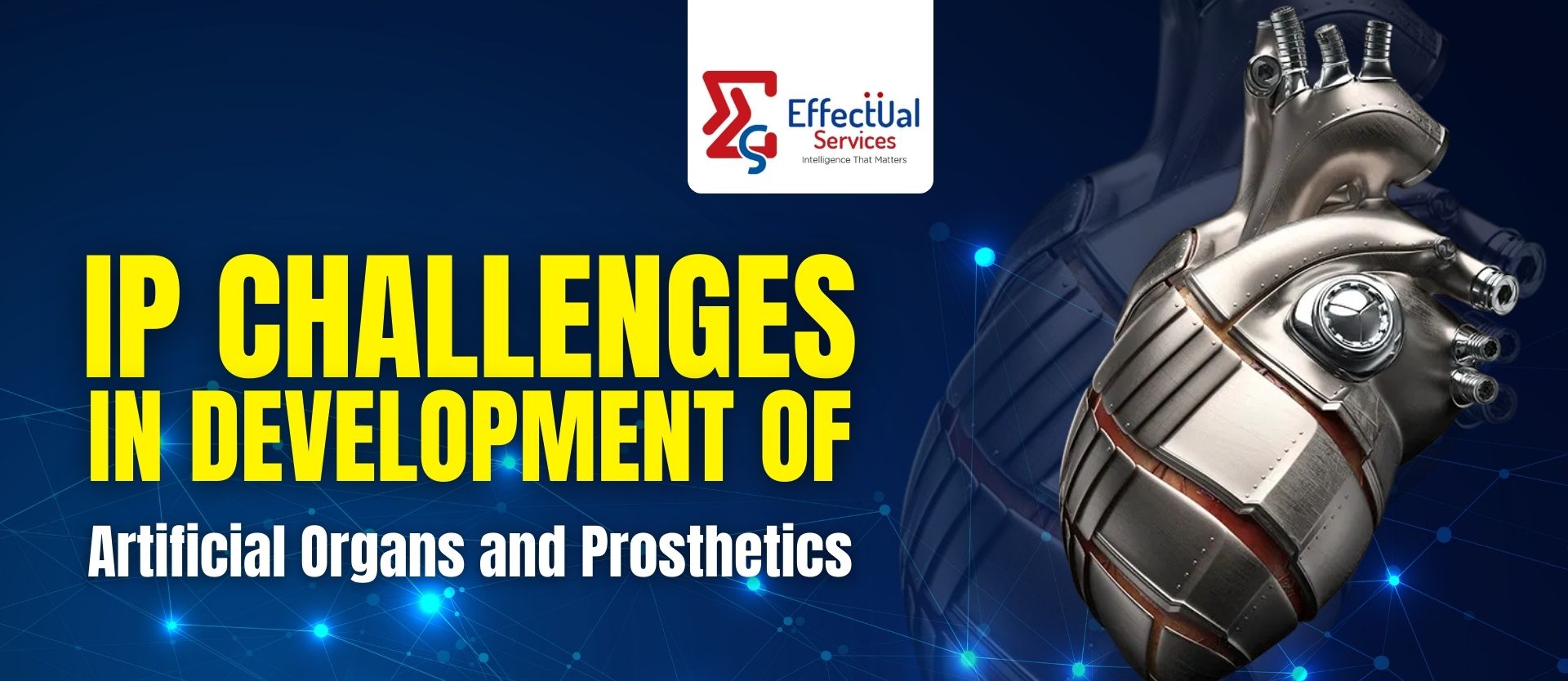IP Challenges in development of Artificial Organs and Prosthetics

Artificial body parts are used to assist or replace the damaged body parts are called Prosthetics and human made organs that are used to assist the damaged organs or used to replace the damaged or failed organs are called artificial organs. Artificial organs and prosthetics are improving the life quality of the person having disabilities.
Artificial Organs are the organs that works like a real organ such as heart, kidney, liver etc. Artificial organs provide an alternative to waiting for a suitable donor organ, which can be a life-saving solution for patients with end-stage organ disease.
Prosthetics are the artificial body parts to replace the missing body parts like limbs, joints, organs etc. Now days, we have prosthetics range from simple limb replacements to highly bionic arms and legs controlled by muscle signals or brain activity.
Complexity in Patent Eligibility
Both of the artificial organs or prosthetics are made by the combination of elements such as electronics, mechanical and biological. That is why this combination makes it hard to recognize what is eligible for patent protection or not. Focusing on the artificial characteristics of the invention, such as the structure and function, the process of creation, and the type of materials used, can effectively handle the complexities of patent law and protect these valuable innovations.
Conflicting and Overlapping Patents
As the technology is becoming advance day by day. Most of the new inventions are advance version of previous technology or somehow based on the previous technology. So new inventions can unintentionally infringe the existing patents. This can lead to legal disputes and can lead to delay the launch of product in the market. Inventors often have to go through various licensing agreements or risk of infringement. This legal and financial burden can be especially tough for start-ups and academic institutions with limited resources. As a result, it often discourages them from chasing ground breaking innovations in the field.
The balancing act of openness and control
Companies want advantages through IP rights, but open innovation and collaboration can accelerate the development of these type of medical devices. In the field like medicine where people health at stake, to hold advancements due to IP concerns can raise questions. This situation mostly sparks debate over the responsibility of individuals or organizations that withhold potentially life-saving knowledge in favour of profit. There is growing pressure on organizations to find a balance between protecting proprietary innovations and contributing to the collective good, especially when public health is involved.
Law inconsistencies across the world
A patent is a territorial right. Different countries can have different laws for patenting the invention. An invention patentable in one country may or may not be patentable in other country. For example, country like U.S., software related inventions can be patented, but in India, they are generally not patentable unless they are tied to specific hardware or produce a clear technical effect.
Conclusion
The Intellectual Property Laws regarding the artificial organs and prosthetics are filled with challenges and complexity. As this field is continuously growing it is important for inventors, applicants, policy makers and others to work together so that Intellectual Property Laws can support both humanity as well as organizations also.
Solutions Driving Innovation & Intelligence
Enabling Fortune 500's, R&D Giants, Law firms, Universities, Research institutes & SME's Around The Globe Gather Intelligence That
Protects and Nurtures Innovation Through a Team of 250+ Techno Legal Professionals.

